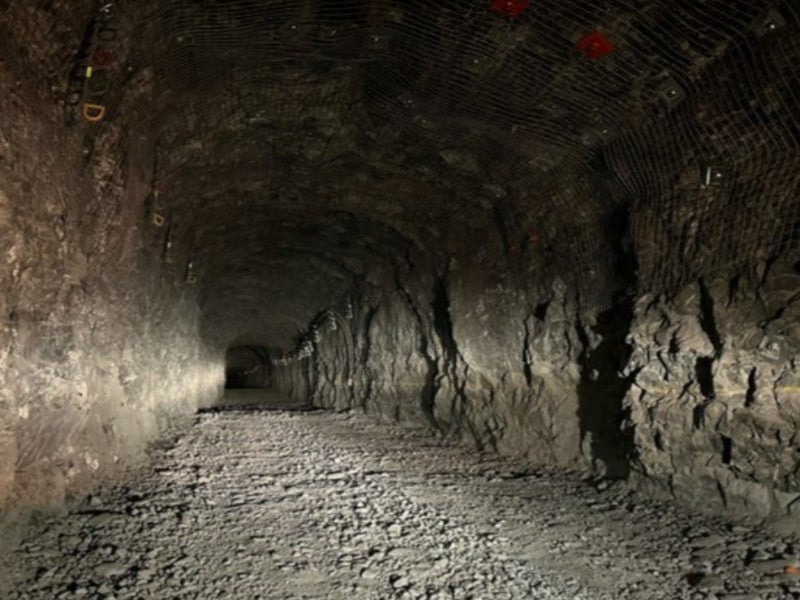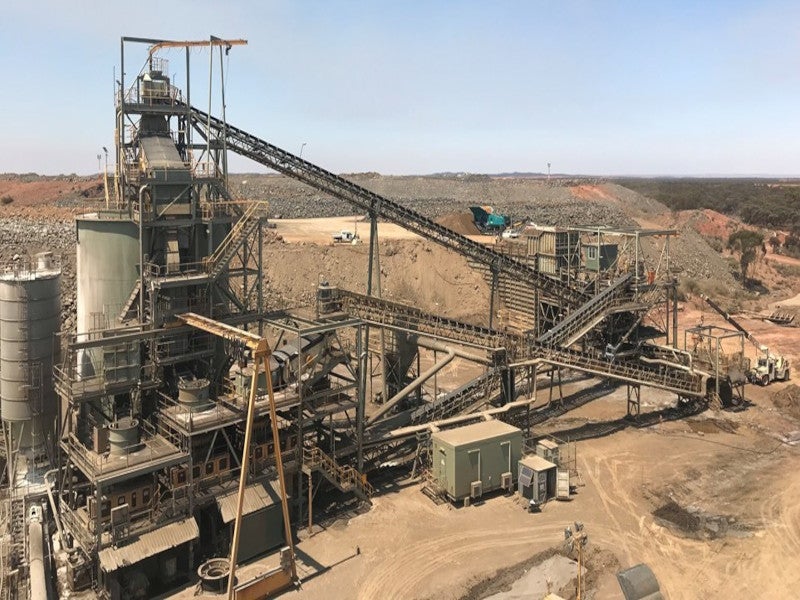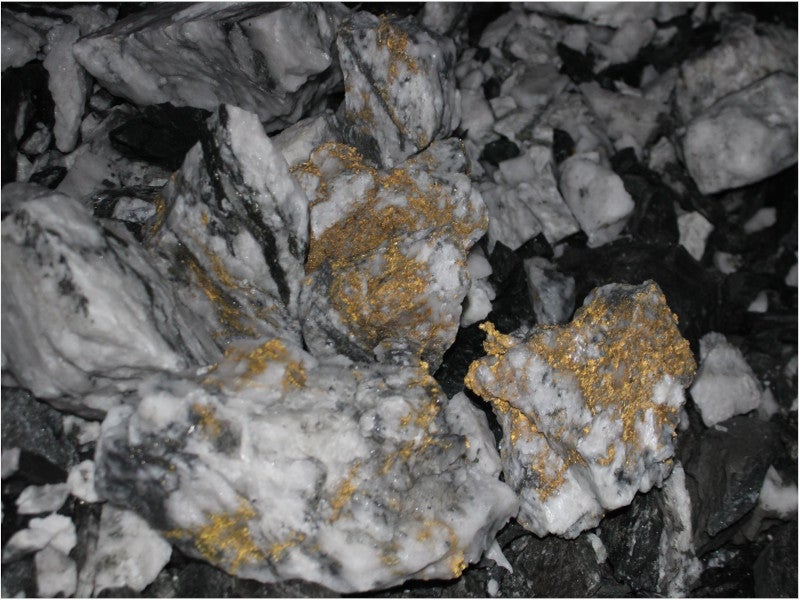The Beta Hunt mine is an underground mine situated in the Kambalda mining district of Western Australia.
The mine is owned and operated by Karora Resouces (formerly Royal Nickel). It is under a sub-lease agreement with St Ives Gold Mining Company (SIGMC), a wholly owned subsidiary of Gold Fields.
The Beta Hunt Mine, which began operations in 1970, produced 31,249 ounces (oz) of gold in the first quarter of 2024.
The mine’s annual production capacity is expected to increase from one million tonnes per annum (mtpa) to 2mtpa, under an expansion project scheduled to commence operations by the end of 2024.
Location of the Beta Hunt mine
The Beta Hunt underground mine is located approximately 600km east of Perth in Kambalda, Western Australia. The property is located 2km south-east of Kambalda and 60km south of Kalgoorlie.
The ore extracted from the mine is processed at two sites: Higginsville Mill (HGO) and Lakewood Mill (LKO).
The HGO is situated 57km south of Beta Hunt and 107km from the regional mining hub of Kalgoorlie-Boulder while LKO is located approximately 4km south-east of the City of Kalgoorlie-Boulder.
Geology and mineralisation of Beta Hunt
Beta Hunt is situated within the central Norseman-Wiluna greenstone belt, in a sequence of mafic/ultramafic and felsic rocks on the southwest flank of the Kambalda Dome.
Gold mineralisation predominantly occurs in sub-vertical shear zones within the Lunnon Basalt, marked by shear and extensional quartz veining, surrounded by a halo of biotite/pyrite alteration.
Nickel mineralisation is primarily hosted by talc-carbonate and serpentine-altered ultramafic rocks (Kambalda Komatiite) that overlay the Lunnon Basalt. The primary sulphide minerals are pyrrhotite, pentlandite, and pyrite, with traces of chalcopyrite.
Reserves at Beta Hunt
The Beta Hunt mine is estimated to contain proven and probable reserves of 6.57 million tonnes grading 2.7g/t of gold, with 573,000oz in contained gold, as of September 2023.
Beta Hunt expansion details
The Beta Hunt mine’s expansion to 2mtpa involves the development of a second decline and related infrastructure including additional ventilation capacity. The expansion project commenced in the first quarter of 2022.
The second (West) decline was completed in the first quarter of 2023. The completion of the new second decline leverages more than 400km of existing infrastructure for both exploration and mining.
Multiple drills are in operation, offering significant potential for low-cost resource expansion near existing mine infrastructure, with all zones open along strike and down plunge.
In addition, three vent raises were completed and temporary fans were installed by the first quarter of 2024, with primary fans planned to be installed by the end of the first half of 2024.
Mining method
Beta Hunt is a mechanised underground gold mine with two active mining areas namely, Western Flanks and A Zone. A third deposit called the Larkin deposit is scheduled for mining in 2025.
The combined strike length of the A Zone and Western Flanks is approximately 1,500m, with stoping conducted over a vertical extent of approximately 500m. Mining is carried out in 25m high stopes, that vary in width from 5m to 25m.
Both Western Flanks and A Zone utilise a top-down, long-hole retreat mechanised mining method, which is well-suited to the sub-vertical nature of the orebody. The same method will be employed for mining at Larkin.
The mine equipment at Beta Hunt is industry-standard trackless underground diesel equipment. The current mine fleet comprises seven 17t and one 14t load, haul, dump (LHD) machinery, 13 haul trucks with capacity varying from 55t, 60t and 63t.
Other machinery includes three twin jumbo booms and two production drills. The mining fleet is expected to be further expanded in 2024.
Ore processing at Higginsville Mill
The run-of-mine (ROM) ore undergoes a four-stage crushing process, starting with a single-toggle primary jaw crusher, followed by three stages of cone crushers.
The crushed ore is then moved to a fine ore bin and subsequently fed onto the mill feed conveyor via a belt feeder. The ball mill operates in a closed circuit with hydrocyclones. The gravity separation circuit is incorporated to enhance gold recovery from the hydrocyclone underflow stream.
The slurry from the grinding circuit is screened for trash before entering the leaching circuit, which comprises a 1,000m³ leach tank and six 1,000m³ carbon-in-leach (CIL) tanks with mechanical agitation.
A gravity recovery circuit, using a Knelson concentrator followed by intensive cyanidation in a ConSep Acacia dissolution module, further improves gold recovery. The pregnant solution from this process is directed to the gold room for electrowinning in a ConSep electrowinning module.
Gold is extracted from the leach solution by adsorption onto activated carbon in the CIL tanks. The loaded carbon is then transferred to the elution circuit, where gold is stripped and recovered by a Pressure Zadra electrowinning circuit.
The resulting gold concentrate is dried, smelted, and formed into bullion.
Ore processing at Lakewood Mill
The ROM ore is crushed using mobile jaw and cone crushers. The crushed mill feed is then conveyed to the ball mill.
The grinding circuit, which includes a ball mill, hydrocyclones, and a gravity recovery system, processes the crushed feed prior to leaching.
The gravity separation circuit employs Knelson concentrators to recover gold from the hydrocyclone underflow, with concentrates processed by intensive cyanidation. Gold is then electrowon and smelted.
The leaching and adsorption circuit, featuring one leach tank and seven CIL tanks, uses activated carbon for gold recovery. Loaded carbon is stripped, and gold is electrowon and smelted.
Gold is recovered from the loaded carbon by a Pressure Zadra electrowinning circuit. The gold from the gravity circuit is leached in the Acacia reactor before being electroplated onto steel wool cathodes in the Acacia cell via the Acacia electrowinning circuit.
The gold is recovered and smelted similarly to the gold produced by the Pressure Zadra circuit.
Site infrastructure
Power required for the mining operation is supplied by SIGMC while potable water is supplied by SIGMC and BHP.
Electricity for the Higginsville mill is generated on-site using eight diesel-powered generators rated at 850kW each. One unit is put on standby for emergency backup. Power for the Lakewood site is received from the Southwest Interconnected System.






